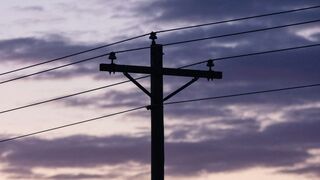Marra quake shakes Siding Springs and beyond
Liz Cutts
28 May 2025, 3:08 AM
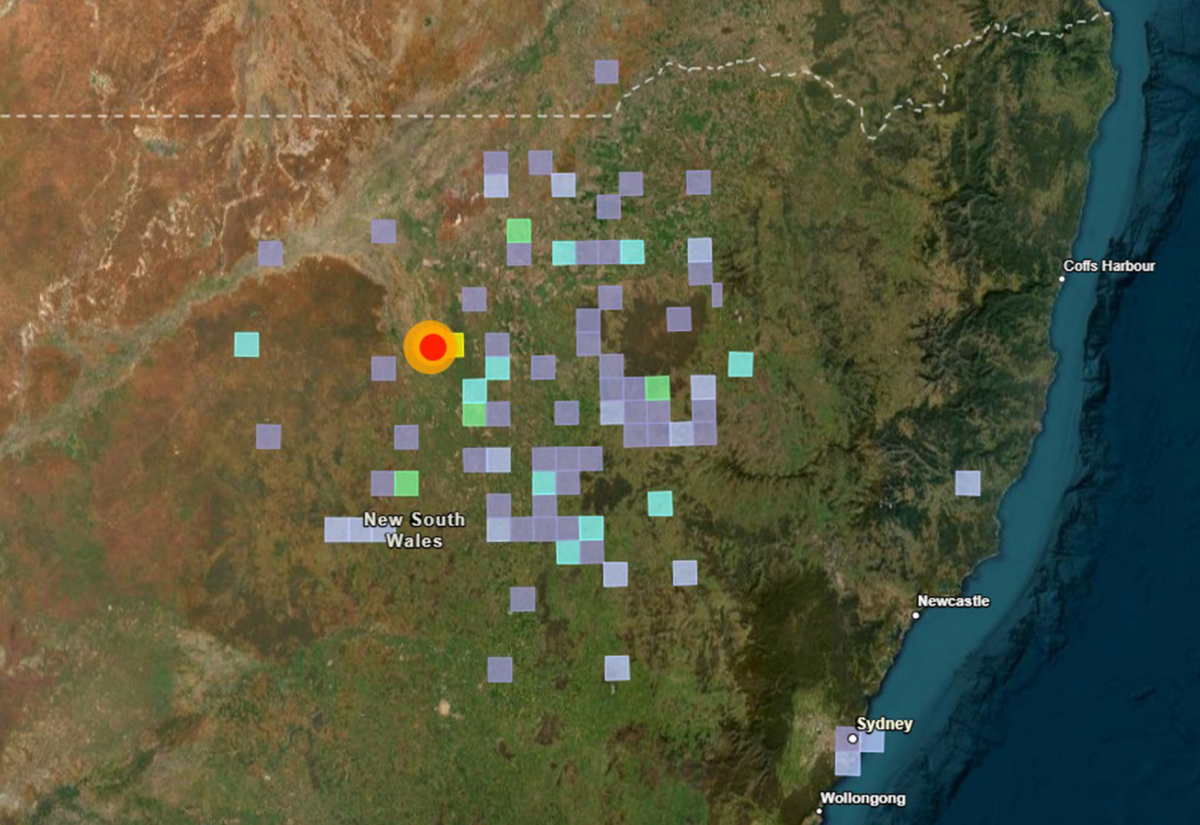 The 'felt map' showing where the earthquakes occurred and who reported feeling the shake. (IMAGE: Geoscience Australia)
The 'felt map' showing where the earthquakes occurred and who reported feeling the shake. (IMAGE: Geoscience Australia)Residents across a wide area of western NSW were jolted awake in the early hours of last Saturday morning when an earthquake struck in The Marra area, north of Nyngan, followed by a series of aftershocks.
Geoscience Australia reported that the tremor occurred at 2:36 am AEST on 24 May at a depth of up to 10 kilometres.
While the original data said the main quake registered 5.2 in magnitude, it was later upgraded to 5.3.
The quake was followed seven minutes later by a magnitude 4.2 aftershock and another magnitude 3.7 tremor about 5:30am.
A later aftershock was recorded at around 11:46am of 3.1 MLa. [MLa = local Australian Magnitude]
The quakes were felt across a wide area, with more than 135 people from Carinda, Dubbo, Narromine, Coolah, Coonabarabran and Baradine, and even Sydney, reporting the tremors to Geoscience Australia by 4am on Sunday.
The tremors are among the strongest recorded in New South Wales in recent years.
For context, a magnitude 5.1 quake struck near Singleton in April 2025, and a 4.8 magnitude event occurred near Denman in August 2024.
In the western region, the most recent quake was recorded just last month, a 2.7 MLa quake 23 kilometres east of Gilgandra.
In 2023, Goodooga recorded a 3.1 magnitude quake on 6 April. It was followed by a 3.1 at Tilpa on 29 August, another larger 4.0 magnitude quake near Goodooga/Lightning Ridge on 24 October.
The family closest to the epicentre of The Marra quake on Sunday were Mark and Heather Dawson, who compared notes with their neighbours the next day.
“The first one was like something had happened to the house,” Mrs Dawson said.
“After that it was the noise as much as anything. For about 15 minutes it was like loud thunder.
“I went outside with my torch and all I saw was stars.
“One neighbour in an older house said her bed was shaking.”
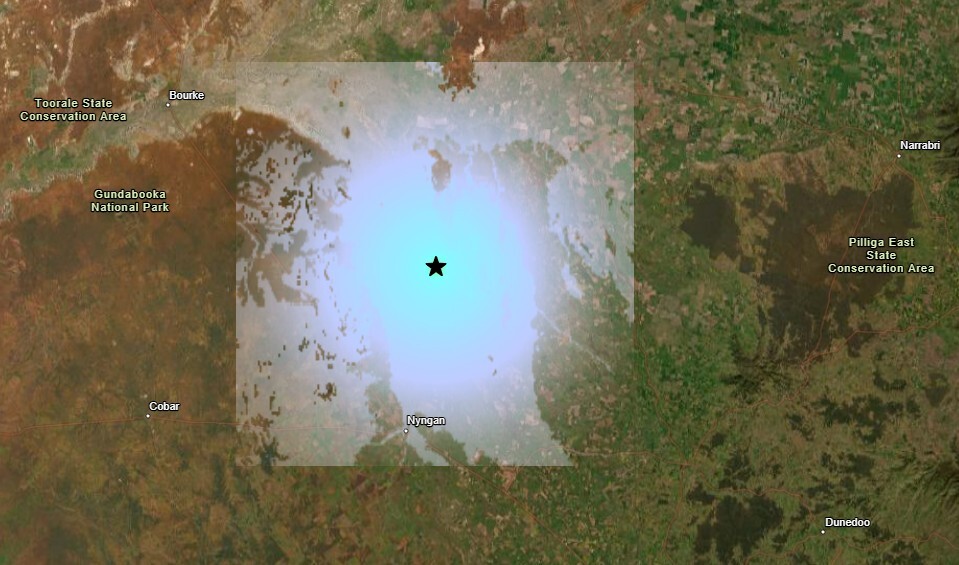
Others in the area described it like a ‘mob of emus running on the roof’ or the house being ‘hit by a truck’.
Not far away, Garry and Leanne Hall at ‘The Mole’ on the edge of the Macquarie Marshes, say their house was moving from side to side.
“We could hear the aftershocks coming, like a thunderstorm on the horizon that just built and built,” Mr Hall said.
“I can tell you I don’t want to do it again.”
On Sunday, residents in the wider region who felt the tremors shared their experiences.
“I heard what I thought was a wind, then this roar underfoot like a herd of road trains loaded with grain driving right before me,” said Lisa Wheeler, who lives around 50 kilometres north of Coonamble.
“Then the whole house rocked. It was a gentle rock, not violent.”
The impact was felt even further east.
“I was woken up by the bed shaking and the windows rattling; I thought it was a strong wind at first and the whole house moved,” said one Baradine resident. “In reality it lasted only a few seconds, but felt much longer and it was quite unsettling.”
On-duty at the Anglo-Australian Telescope (AAT) at Siding Spring Observatory in the early hours of the morning, physicist Andre Phillips says that he noticed that his chair appeared to be shaking.
“I then felt the whole control console vibrating,” he said. “This strange state of affairs lasted for around twenty seconds, and it was then I was pretty sure I’d just felt an earthquake.
“I checked out the Geoscience Australia Earthquakes web page and a few minutes later a report came through confirming the tremor.
“I don’t expect that this event will have damaged anything within the AAT but there is a possibility that very twitchy instruments could have been affected. But no alarms went off so I guess we’re pretty OK.”

Siding Springs Observatory looks across the Western Plains. (IMAGE: Tripadvisor)
Andre says that there have been similar sized earthquakes in the region recorded in the past.
“Although the region is not considered to be an earthquake area, there is historical evidence of massive earthquakes having taken place from time to time and little tremors happen all the time,” he added.
“There was a magnitude 5.0 earthquake recorded near Pilliga Pottery in 1969 and there was another in the Keepit Dam area some years ago, which was felt in Coonabarabran.
“Mining does have the potential to trigger earthquakes in some areas, but it is highly improbable that this earthquake was caused by such activity.”
Andre says that earthquakes are caused by the sudden release of energy in the Earth’s crust due to the movement of tectonic plates.
“They are caused by stress in the ground and stress can be induced by all sorts of things. The whole of Australia is slowly moving northwards by around 70 millimetres a year, so the stress in rock builds up over time as the tectonic plates slowly push against, pull apart from, or slide past each other.
"It’s like pulling a rug over a rough surface, the rug is moving, but it is bending, warping and twisting as it goes over the underlying surface.
"This induces stress, so that in the end something cracks causing two adjacent slabs of rock to slide against each other, or to ride up on top of the other releasing the stored energy as seismic waves. This rapid release of energy is what we experience as an earthquake.”
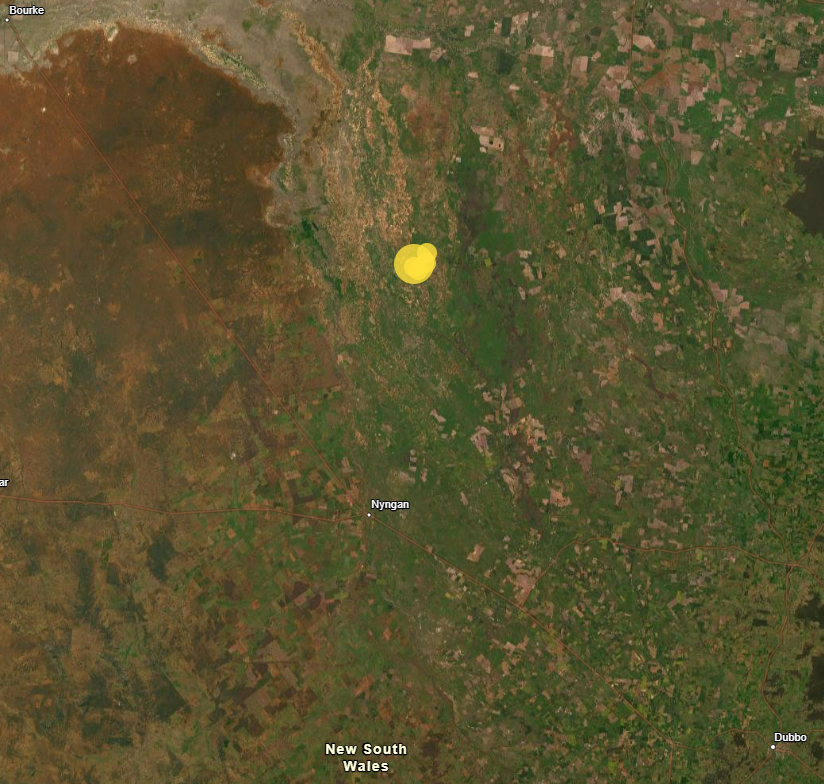
Senior Seismologist at Geoscience Australia, Phil Cummins, gave a similar explanation.
“In Australia, the earth’s crust is conducive to seismic waves,” he said.
“It was likely a classic earthquake due to the build up of tectonic stress on the edges of the Australian plate.
“It could come from New Zealand, Papua New Guinea or even as far away as India where the collision with Asia uplifted the Himalayas.
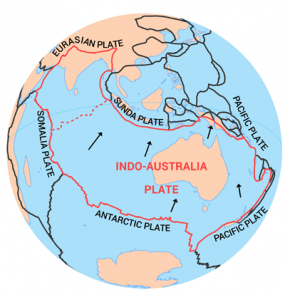
Australia's position on the Indo-Australian plate. (IMAGE: earth.how)
“Those forces are transmitted and slowly builds up and the crust will rupture in Australia, it happens frequently and randomly.
“It is an old crust, riddled with faults, so it’s hard to know where which faults are going to rupture or where they are.
“There’s no place on earth that is free from earthquakes.”
Geoscience Australia states they are continuing to monitor the situation.
So far there are no confirmed reports of injuries or significant structural damage and authorities are urging residents to report any damage or unusual ground movement.
By LIZ CUTTS & LEE O’CONNOR



